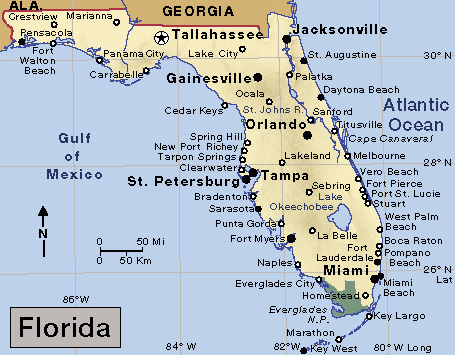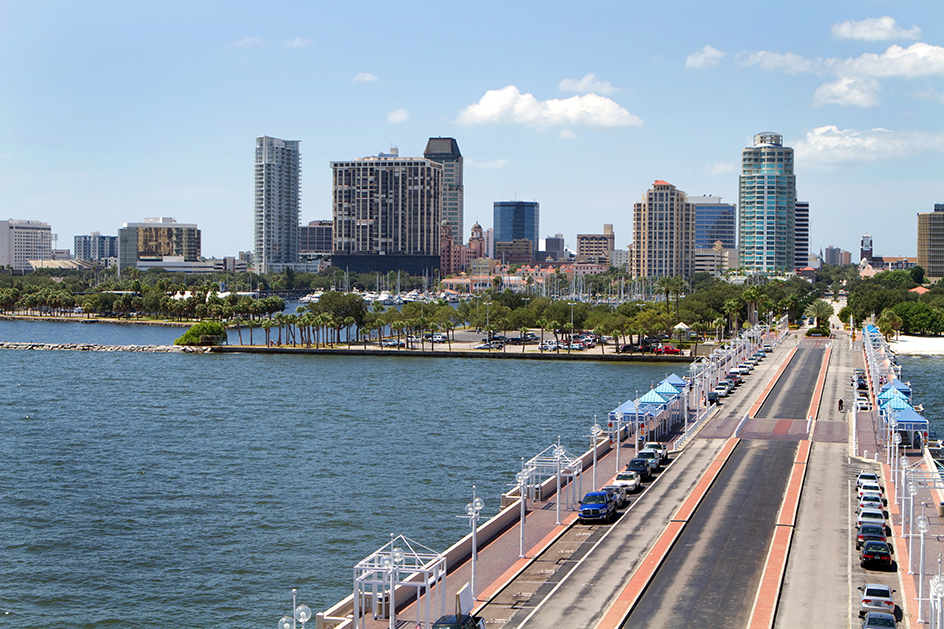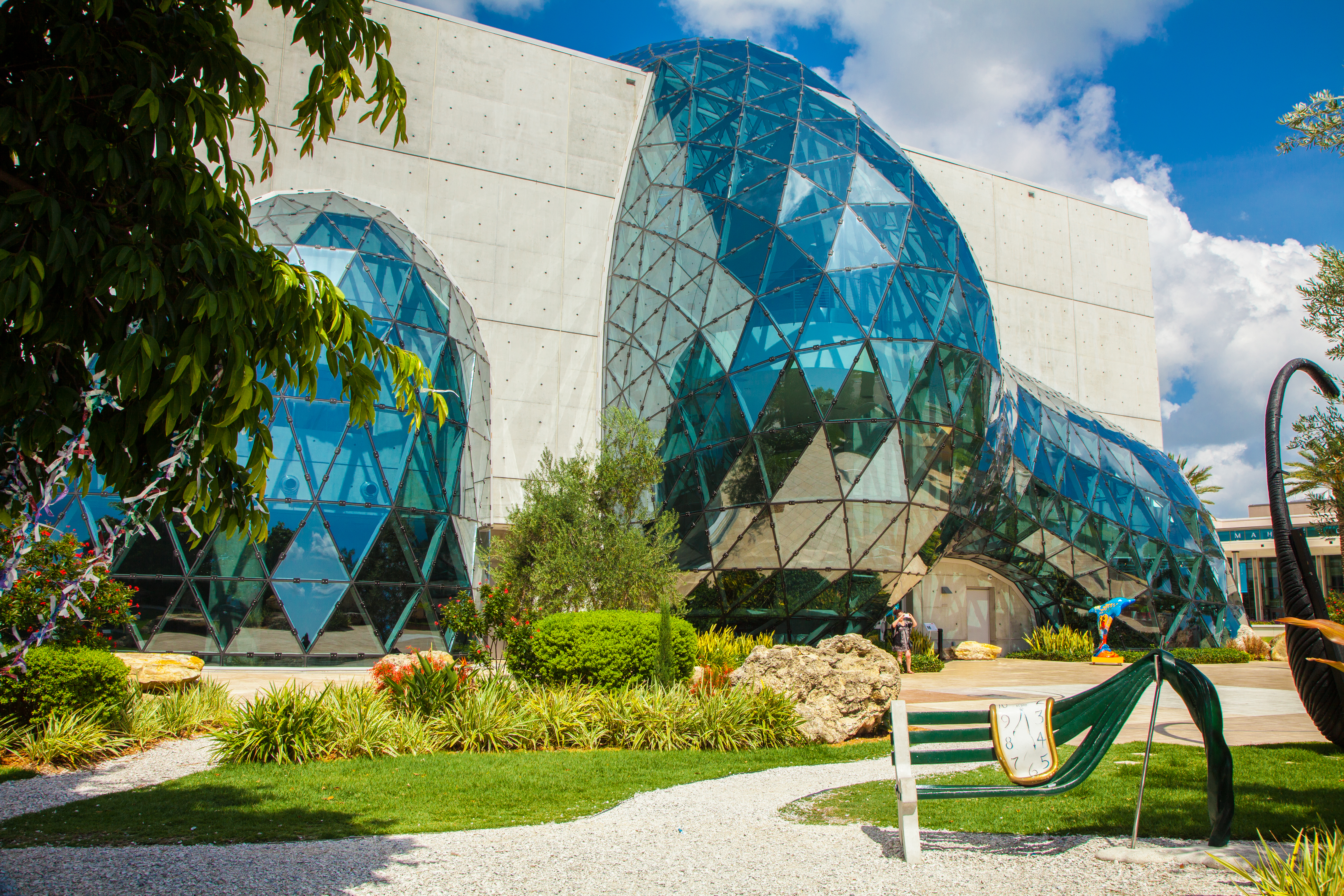Saint Petersburg (pop. 258,308) is a city on the west coast of Florida. Its warm, sunny climate and location on Tampa Bay made the city a resort area, beginning in the early 1900’s. St. Petersburg is sometimes called the Sunshine City because of its pleasant weather. In the mid-1900’s, many retired people began moving to St. Petersburg, and the city became a retirement center as well. In the late 1900’s, a variety of new economic opportunities attracted many younger people to the area to work.

St. Petersburg lies at the tip of Pinellas Peninsula on Tampa Bay. St. Petersburg, Tampa, and Clearwater form part of a metropolitan area that has a population of 3,175,275. See Tampa.
Description.
St. Petersburg covers 62 square miles (161 square kilometers) of land. Three bridges link the city with the Florida mainland to the east. Other bridges and highways connect St. Petersburg with heavily developed barrier beach islands on the Gulf of Mexico to the west. The city has about 40 miles (64 kilometers) of shoreline and a deepwater harbor that is home to a United States Coast Guard base. St. Petersburg has about 70 lakes. Because of its climate and location near large bodies of water, St. Petersburg is a center for such water sports as fishing, sailing, and scuba diving.

The city’s chief cultural attractions and recreation areas lie on Tampa Bay, just east of the downtown area. The city has a number of museums. One of them, the Dalí Museum, houses what may be the world’s most comprehensive collection of works by the Spanish artist Salvador Dalí. Duke Energy Center for the Arts and The Pier provide cultural or recreational facilities. Duke Energy Center for the Arts has a performing arts theater and other public facilities. The Pier extends into Tampa Bay and includes restaurants, shops, and an aquarium. St. Petersburg is the home of Eckerd College, St. Petersburg College, and a branch campus of the University of South Florida.
Several major-league baseball teams have held spring training in St. Petersburg since 1914. As a result, the city is called the Winter Baseball Capital of the United States. The city gained a major-league baseball team of its own in 1998, when the Tampa Bay Devil Rays (now the Tampa Bay Rays) of the American League began playing at Tropicana Field.

Economy.
A number of hospitals make St. Petersburg a leading medical center. Health care ranks as a major employer in the area. Retail trade and manufacturing are also important employers. The chief manufactured products include electronic equipment and health care products. Spending by tourists contributes heavily to the economy of the St. Petersburg area.
Government and history.
St. Petersburg has a strong-mayor form of government. A city council makes government policies. It consists of a mayor and eight council members, all elected by the people to four-year terms. The mayor hires a city administrator, who handles the day-today operations of the government.
Indians lived in what is now the St. Petersburg area as early as 5000 B.C. Timucuan Indians lived there when Spanish explorers first arrived in the early 1500’s. Whites began to settle there in the 1840’s. Peter A. Demens, a Russian-born businessman, built a railroad to the area from central Florida. Demens named the community for his birthplace, St. Petersburg, Russia. By 1890, about 270 people lived in St. Petersburg. The community was incorporated as a town in 1892 and as a city in 1903.
The first of several tourist booms in St. Petersburg began in the early 1900’s. The city attracted attention in 1914, when the world’s first commercial airline began to operate there. A boom in land sales increased the population from 14,000 in 1920 to about 40,000 in 1930. Gandy Bridge, which opened in 1924, linked St. Petersburg and Tampa. Later, other bridges helped the city’s growth.
St. Petersburg has built several projects on Tampa Bay. The St. Petersburg Yacht Basin, a harbor for yachts, opened in 1963. The Bayfront Center (now Duke Energy Center for the Arts) opened in 1965. The Pier was renovated in 1973 and 1988. The Vinoy Park Hotel, built on the waterfront during the 1920’s land boom, was restored and reopened as a luxury hotel in 1992.
